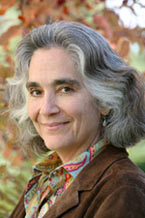
Handy Links
SLAC News Center
SLAC Today
- Subscribe
- Archives: Feb 2006-May 20, 2011
- Archives: May 23, 2011 and later
- Submit Feedback or Story Ideas
- About SLAC Today
SLAC News
Lab News
- Interactions
- Lightsources.org
- ILC NewsLine
- Int'l Science Grid This Week
- Fermilab Today
- Berkeley Lab News
- @brookhaven TODAY
- DOE Pulse
- CERN Courier
- DESY inForm
- US / LHC
SLAC Links
- Emergency
- Safety
- Policy Repository
- Site Entry Form

- Site Maps
- M & O Review
- Computing Status & Calendar
- SLAC Colloquium
- SLACspeak
- SLACspace
- SLAC Logo
- Café Menu
- Flea Market
- Web E-mail
- Marguerite Shuttle
- Discount Commuter Passes
-
Award Reporting Form
- SPIRES
- SciDoc
- Activity Groups
- Library
Stanford
Around the Bay
From the Director: Return of the Scientific Policy Committee
 From the laboratory's inception, Stanford University has managed SLAC with the goals of enhancing the science research; supporting
the Department of Energy's science mission; and contributing to the education of the students and postdocs of Stanford University and other academic institutions. Until 2005, the SLAC Scientific Policy Committee was the University's highest level oversight committee for SLAC, providing Stanford with a semi-annual assessment of the laboratory's scientific programs and long-range scientific planning. The SPC reported to the President of Stanford. The members of the SPC, serving 4 year terms, have been among the most distinguished scientists in the fields covered by SLAC's programs.
From the laboratory's inception, Stanford University has managed SLAC with the goals of enhancing the science research; supporting
the Department of Energy's science mission; and contributing to the education of the students and postdocs of Stanford University and other academic institutions. Until 2005, the SLAC Scientific Policy Committee was the University's highest level oversight committee for SLAC, providing Stanford with a semi-annual assessment of the laboratory's scientific programs and long-range scientific planning. The SPC reported to the President of Stanford. The members of the SPC, serving 4 year terms, have been among the most distinguished scientists in the fields covered by SLAC's programs.
In 2005, the Scientific Policy Committee was renamed the SLAC Policy Committee and its membership was broadened to include expertise in science management and ES&H in addition to science, reflecting the need for Stanford to have a more formal oversight mechanism for all aspects of the laboratory management.
Last fall, Stanford University established more active corporate oversight mechanisms for the management of SLAC, drawing more fully on the strengths within Stanford. Stanford appointed a Vice President for SLAC, Bill Madia, who will chair a SLAC Board of Overseers to lead the oversight process.
The SLAC Board of Overseers is appointed by the President of Stanford University. The Board's role is to provide guidance, oversight, direction and advice to the President of Stanford and SLAC management with respect to scientific and technical issues, long-range objectives, laboratory operations, budget and facility plans, as well as personnel and staffing matters, and the relationship with the U. S. Department of Energy. The SLAC Board will have four subcommittees covering Finance, HR, Operations (including ES&H) and Science. The science subcommittee of the Board will be the Scientific Policy Committee, constituted very much as was the old SPC to ensure that SLAC's science strategy is supportive of DOE mission needs, as well as Stanford University's educational and research goals, and is being executed in a manner that will produce the intended results.
The SPC meets today and tomorrow and a focus of the meeting will be a discussion of the science strategy for the future as described in my column last week. We have provided the SPC with the business plan that was discussed with the Office of Science Tuesday of this week. We are very much looking forward to the SPC's feedback and comments.
We are fortunate that this distinguished group of scientists (listed below) is willing to take two days from their busy lives to come and help us craft our scientific future. We look forward to the advice that they have for us and for the University.
Hiroaki Aihara - University of Tokyo
William F. Brinkman - Princeton University
Reinhard Brinkmann - DESY Hamburg
Helmut Dosch - Max Planck Insitut
Harry B. Gray - California Institute of Technology
Craig J. Hogan - University of Washington
Young-Kee Kim - University of Chicago
Hitoshi Murayama - Lawrence Berkeley National Laboratory
Denis J. Raoux - Societe Civile Synchrotron
Douglas C. Rees (Chair) - California Institute of Technology
Jeff Richman - UC Santa Barbara
Charles V. Shank - Director Emeritus, Lawrence Berkeley National Laboratory
Maury Tigner - Cornell University